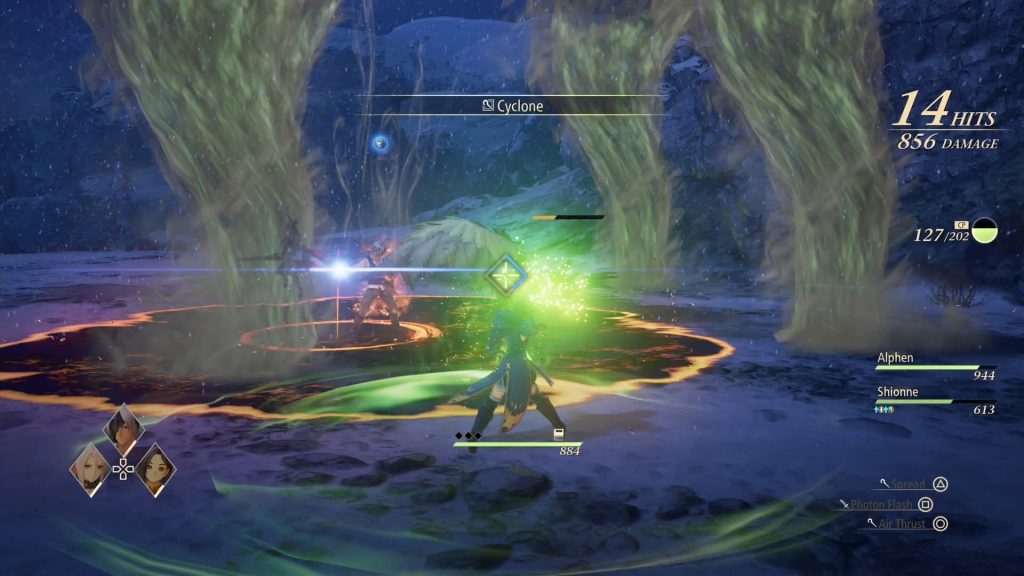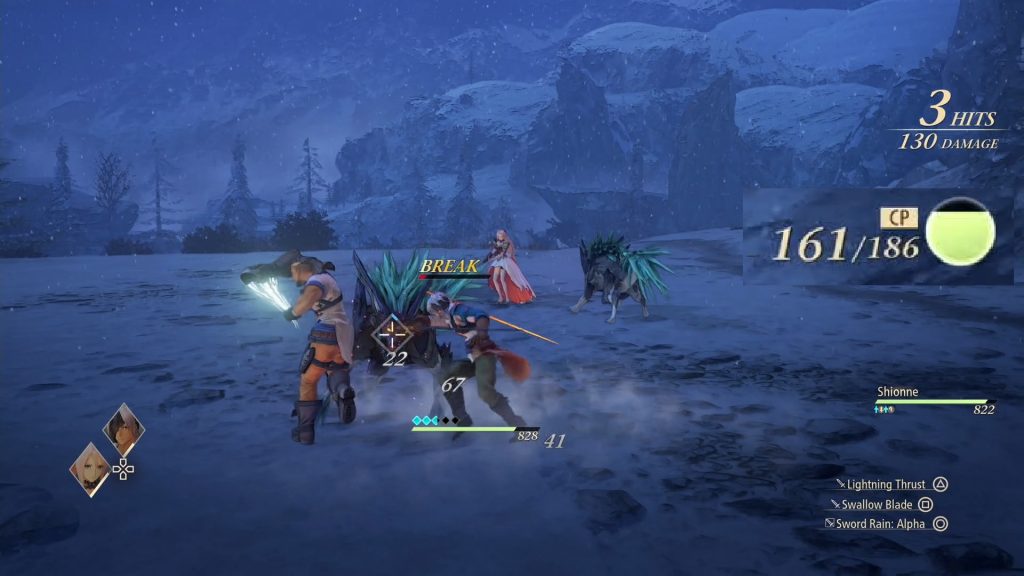Tales of Arise Review | A Phenomenal Fantasy RPG
Tales of Arise will finally release globally, but will it satisfy both longtime fans and newcomers? We believe it will!

From its announcement back in 2019, Tales of Arise will finally release globally on September 9. Hyping us back-to-back with its tantalizing trailers, gameplay previews, and even a 6-character playable demo–the question therein lies, how awesome is Tales of Arise?
Considering how huge the universe of Tales is, many are perhaps hesitant in trying this new fantasy role-playing game from the franchise. Do I need to play the previous games? Will not doing so affect my progress and enjoyment? Fret not, for Tales of Arise is a new mothership title–with its own standalone universe and story. And after clocking in more than fifty hours’ worth of gameplay, I was not disappointed!
Smooth-Sailing Gameplay
After experiencing the playable demo released on August 18, the actual game offers the same suave gameplay and top-of-the-line graphics with more surprises in store. The revamped game menu gives you access to Items, Artes, Equipment, Skill Panel, Strategy, Outfit, Field Guide and Settings.
Tales of Arise offers the player flexibility in combat preferences with its six playable characters, with each specializing in melee, range, spellcasting, healing, and even a combination thereof. Your main combat party consists of four characters, and you may opt to switch as freely and as often as you like during combat. Boost strikes (supportive fighting techniques with your teammates) made during battle are not exclusive to your main party but are also available with your backup, too. This feature is highly useful because the characters provide amazing perks in battles with different zeugles or monster enemies. Therefore, you will no longer worry about fixing your main combat party before a big fight. You will find the ease in switching characters in the middle of battle a very big plus in your gameplay.
I myself enjoyed switching characters in the middle of battle during my playthrough. It was tough to get used to at first, since I had to keep in mind all of their different Artes (or techniques). For someone who is used to close-combat fighters, I have been knocked back with how comfortable it was to use the other characters specializing in range and distance. I can deduce that the variety adds a certain challenge in-game for me.
You have two ways to switch characters while in battle: (1) You can manually switch the four main combat party characters with the two backups via the Edit option of the battle game menu, or (2) by holding the L1+direction pad (This is only between your four active combat party members). Take note, though, you can switch your KO’d active characters with your backup; however, you cannot switch your live active character with a KO’d backup. Once your active combat party members are all KO’d, despite having a live backup, it’s battle over for you.
Fortunately, you get to use CPs or Cure Points for healing and character revivals. They are also used for certain exploration perks and may only be replenished by choice items, resting through camps and inns, and certain restoration points. You may exhaust your CPs through battle unknowingly, thus take note of your strategies.
I have only died once or twice in my playthrough because I set my battle strategies appropriately enough that I had a healing option for my party. Set your strategies to your preferences and efficiency in combat. They have numerous options from fighting aggressively to using items during battle, very much like the Gambit system of Final Fantasy XII.
And like most Tales games, the control options for your main playable character can be set in Auto, Semi-Auto, and Manual. Auto is mainly CPU control; the game will decide the character’s actions for you. It’s good if you want to take some time off from grinding, grab a snack, and the fight will still go on. However, it’s not always perfect and you may end up losing rather than winning, especially if you have not set your battle strategies properly. Semi-Auto and Manual control have similar features. Semi-Auto has an automatic approach to an enemy immediately after lock-on for attack. With Manual, however, you have to always control your character to run towards the enemy itself or else you may be launching attacks in empty air.
Speaking of empty air, I have to note that even with the Semi-Auto control active, I still tended to miss my targets. Depending on the type of enemy I encountered, especially with small flying ones, I sometimes unleashed combos that cannot be easily stopped midway, and thus I completely miss and waste a good few seconds of attack. It is part of the game challenge, however. Executing Artes at the right timing and sequence greatly helps with the battle success.
And while you may enjoy mixing and matching Artes and spells throughout your battles, take note that unlocking title skills from the Skill Panel will increase them further. Grind more, do quests, and harvest enough SPs (Skill Points) to get these advantageous skills.
Developing and growing your character’s stats are pretty straightforward in this game and definitely not hard to miss out on. Throughout your journey, the game itself will guide you with tips and notable advice on fighting, quests, camping, fishing, crafting, and CPs or Cure points (for character health and exploration). More intriguing, and surprising gameplay features will be discovered as you progress in the story.
Unless, of course, you have bonus in-game purchases or DLCs (downloadable content) to expedite your success. I myself have played with bonus content from the Ultimate Edition and suffice to say, these ‘buffs’ positively affected my growth in the game, but they did not siphon off my enjoyment nonetheless. I still find the need to religiously grind my levels, farm resources, and craft better equipment for progress. Getting DLCs will not stop me from getting pummeled to hell and back by random powerful monsters I had the misfortune to stumble upon. I find leveling up to be a natural part of the game, because the existence of the main story quests and sidequests nudge me to run around to fight and fight some more.
The Journey Arises
Like any fantasy RPG, Tales of Arise introduces a world of magic and mystery rife with puzzling creatures, and an equally enchanting environment. You may find yourself taking in the view of the beguiling landscapes, the illustrious architecture, and the sprawling foliage. Despite the game not being fully open-world, it makes up for the expansive maps, numerous side quests, and bountiful resources you can explore.
The improved environment interactions certainly put a flair in the gameplay as well. I find the developers’ attention to detail quite compelling, especially with the new swimming feature in the game. It is nice to note that there is a realistic pull of gravity in deeper bodies of water when characters jump into them. Such waterscapes cannot be missed in the game since you have to swim through them when exploring certain areas of the map. But hey, at least you can’t drown–like when you can’t get any damage from falling off a ledge.
The game is abundant with resources for equipment crafting and food recipes which are easy to farm and respawn. Coupled with the game’s fast-travel feature, juggling through different maps for quests, replenishing supplies, and fighting monsters to increase your levels have been positively manageable. Also, it is easy to traverse through choice locations in the map with the game’s guiding ‘stars’: yellow for main story quests and green for side quests. You will not get lost in Tales of Arise.
Having said this, it is great to note as well that there is no limit in taking in sidequests, even from NPCs. Feel free to explore to your heart’s content! Catch an owl? Sure. Heal the injured? Great! Postpone tyranny by fishing? Most certainly! You will encounter such side quests as you go along the game, so you will not miss them. However, a handful of mundane actions in-game can trigger other side quests so better keep an eye out for them and explore some more.
With the emergence of dialogues and skits, your journey only gets better and better. Tales of Arise has revolutionized Tales’ recurring feature of skits. Skits are instances wherein you may be able to experience dialogues of interactions between characters of your party, or with NPCs. From recent Tales mothership titles, most skits have been shown to feature 2D sprites with some light animations; however for the first time in the franchise, Tales of Arise improved their skits into 3D renders creatively shown in comic-like panels. These skits are important in learning more about the game lore, as well as the characters’ personalities, histories, and development.
Inasmuch as the cutscenes and skits may take a chunk of the gameplay time, I find them to be a prime factor in the game’s storytelling throughout the journey. And storytelling is where Tales is lauded for. Campsites offer its fair share in these skits and they are remarkably fun! It’s quite similar to Final Fantasy XV’s camping shenanigans. I find spending time in campsites very fulfilling for they unlock deeper bonds with the characters and provide more entertaining skits and animations.
A Truly Epic Expedition
What makes Tales of Arise stand out from its predecessors, apart from the better graphics and smoother gameplay, is its way of making us, the players, want to know and discover more answers. We are thrust into a repressed society knowing nothing about our main character, Alphen, since he has lost his memories. It’s a journey with him and his friends to retrieve the truth, liberate the oppressed, and be enlightened with the mysteries of the world we thought we already had an idea about.
With its Auto-Save feature and ease in manual saving anywhere on the map, playing the game is akin to watching a movie, shifting in a pace that has barely any hints of something phenomenal happening. There are moments that will make you ponder if the game is too fast or too action-packed so early in the playthrough, but I think that is part of the charm. The events will pull you in bit by bit with its revelations, getting you hooked and comfortable; until the time comes for them to pull the rug off your feet and make you realize that all is not what it seems. There are no numbered ‘chapters’ to tell you that, “Oh, I have reached this, I have to expect something big.” Surprises just suddenly hit as hard as being knocked out by a high-level zeugle–and take it from me, the shock from the story revelations had me reeling!
The game’s story provides certain points when you thought you already had answers when in fact, there were more questions! I find this aspect quite enthralling, if not exciting, because it makes you think there are definitely more things to explore, more battles to fight, and more mysteries to unravel. It gives the assumption that the playthrough will be quite lengthy (and most Tales games are) which is a good thing, for I certainly felt the need to play more and complete the sidequests!
The visible indication that you have reached certain milestone events that may be considered as ‘chapters’ in the game is reflected in the artwork of the game menu, and it is a view most certainly worth looking at. Of course, the characters’ fashionable outfits which you can change throughout the game take the spotlight too. Why fight in boring heavy armor when you can spruce them up with cute and whimsical attachments? It is a constant aspect in Tales that I am most happy to experience again.
Final Verdict: 8.5/10
For fans of anime RPGs and newbies aiming to try the franchise, Tales of Arise is a must-have, must-play game this year. If you are in the market for a story-driven game with good character development, tons of fun sidequests, and smashing combat gameplay, this game is for you.
I admit, I had to play this game quicker than I would usually do for past Tales games, but even so, I found the pace perfectly manageable. Gameplay-wise, this may be the best Tales game for me. I had fun leveling up, crafting, and completing quests to improve my characters.
However there are downsides in the game that did not click well for me. The game has smaller allocation of Artes as compared to some Tales titles which I have played, the lip animation not coinciding with the English audio, and there are some cliche anime scenes which may come off as ridiculous and disappointing for the player.
Truly, the journey has been great, though the game may need a tad bit more lore details in tying up its ending. Nonetheless, the overall experience is quite addictive and I would not think twice in going for multiple playthroughs to unlock achievements.
So, going back to the question, how awesome is Tales of Arise? Grade-A AWESOME.
*This game was reviewed via a review copy sent by Bandai Namco Entertainment.




















